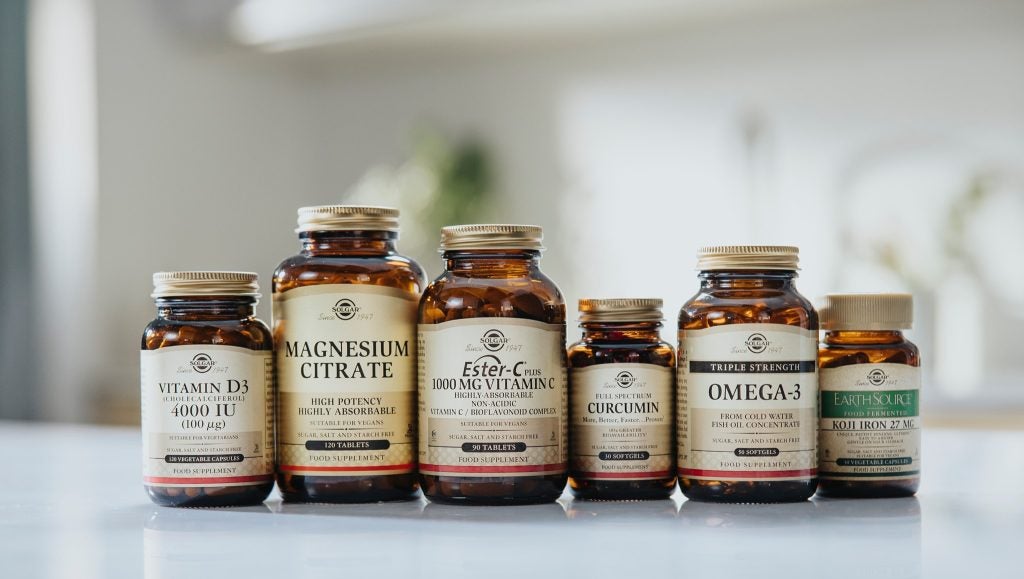
When it comes to food specifically targeted and marketed at the ageing or elderly population, the demographic is left out in the cold.
Or so it appears, at least for the time being, as food manufacturers are arguably more engaged in catering to the nutritional needs of a younger audience – Gen Zs and Millennials, and infants starting out in life on baby formula.

Discover B2B Marketing That Performs
Combine business intelligence and editorial excellence to reach engaged professionals across 36 leading media platforms.
That’s not to say older brackets are ignored. Like their younger counterparts, they too are seeking out healthier, less processed foods with health now an important consideration when it comes to purchasing decisions.
Yet the ageing or elderly consumer also gives careful thought to their health when it comes to food, more so than previous generations. And aside from medications and supplements, requirements for specific foods more in tune with older people’s needs are undoubtedly going to increase.
Let’s also not forget that treats, snacks and indulgence products don’t just disappear from your food repertoire just because you are old, with the term of course subjective as old to one person is not the same as old to another.
Yet there is a plenty of evidence that people are living longer while birth rates are declining, begging the question whether catering to this age group is a missed opportunity for food manufacturers beyond specialist products?

US Tariffs are shifting - will you react or anticipate?
Don’t let policy changes catch you off guard. Stay proactive with real-time data and expert analysis.
By GlobalData“Not a priority”
Snacking giant Mondelez International refers to the demographic as ‘second lifers’ in the post-retirement stage of their lives. In its 2023 state of snacking report, the company said “brands will increasingly focus on responding to their needs, preferences and tastes”.
But are they? Not yet it seems or at least with any sense of urgency or priority.
In the same report, Mondelez quotes figures from the World Health Organization – by 2050, the number of people above 60 will double to 2.1 billion, representing 22% of the world’s population, it says.
“This age group wants food that supports healthy aging and an active lifestyle, putting the spotlight on balanced nutrition options,” Mondelez notes in the report’s commentary, adding: “Indulgence remains an important consideration for snacking choices, with 68% of consumers over age 58 snacking to pamper, spoil or reward themselves.”
Nevertheless, asked to contribute to this article on the potential opportunities in age-related foods a comment from a spokesperson at the Cadbury chocolate maker was quite telling.
“Indulgence remains an important factor for snacking choices, even among mature consumers,” Mondelez says. “Most of our brands are more focused on marketing to Gen Z and Millennials, and specific products for an ageing population is not a priority for Mondelez at this time.”
Alex Rosenthal, a New York-based director at Verlinvest, the growth equity fund managing capital on behalf of the family-controlling shareholders of brewing giant AB InBev, suggests it’s really a waiting game.
Challenger brands
Rosenthal argues that large food companies like Mondelez are likely to take up the mantle not by themselves but through emerging challenger brands, if and when that happens, and then pounce when the opportunity is right.
“Very little of the innovation coming out of the food and beverage industry is oriented towards a demographic which not only is becoming the largest demographic, at least in the United States, in regards to wallet share and wealth and potentially population, but has the most needs and necessities as it pertains to diet,” he explains.
“They’ll be waiting for the next class of brands to arise that serves that need, and then they’ll start acquiring once there’s scale and that hasn’t happened yet.”
The opportunities appear vast and wide-reaching. Think functionality and multi-functional foods with added minerals and vitamins, calcium-enriched products for bone health and protein-fortified foods, products catering to the deterioration in the sensory experience or taste, and those to address issues around chewability, swallowing and digestion.
Then throw portion control, packaging size, ease of packaging access and waste into the basket.
Malnutrition
Satu Jackson, the CEO of the British Association for Nutrition and Lifestyle Medicine, sets the scene, concluding there is an opportunity to be grasped.
“There is a well-documented prevalence of malnutrition in old age and we are just starting to get some research to understand better the age-related changes in digestion, and absorption of nutrients due to the functional decline of the gastrointestinal tract,” Jackson says.
“I have not yet seen evidence that food manufacturers are considering the ageing population specifically in terms of foods that would support nutrient-dense dietary intake of whole foods, minimally processed and formulated so that the food can be consumed also by those that don’t have their natural teeth or have impaired chewing ability.
“Food manufacturers could consider increased variety of fortified foods with reduction of excessive fat, sugar and salt to improve the nutrient profile. Evidence supports that this could make a significant contribution to intake and status of micronutrients in older adults.”
In reality, food manufacturers could do more
Steve Osborn, Aurora Ceres Partnership
Companies such as Nestlé and Lactalis are catering to the ageing cohort to a certain degree, but the products offered tend to be more specialist rather than homing in on the type of everyday items that could commonly be found in the general grocery aisle.
“In reality, food manufacturers could do more,” says Steve Osborn, the co-founder of Aurora Ceres Partnership, a UK-based better-for-you advisory for the food and drinks industry, who suggests products addressing the needs of the elderly populous should be more “mainstream”.
Osborn adds: “With the population ageing there are a range of needs that need to be catered to and you rarely see them outside specialist products. Whilst there are multiple protein-rich products available, the marketing is strongly skewed to sports nutrition, and overlooking an important demographic.
“A little bit more thought on how healthy ageing is an important part of life, and how the food manufacturers could help move the needle to easier choices wouldn’t hurt – the commercial benefits must be there.”
Specialist swerve
Just Food asked Nestlé what sort of opportunity the world’s largest food business sees in addressing the consumption profiles of the not-so-young age group and was referred to comments made by CEO Laurent Freixe at the recent capital markets day event.
“On top of expanding existing winners, I see opportunities to set Nestlé up for the future by fuelling new areas of growth,” he said, pointing to “healthy longevity, women’s health, weight management, or affordable nutrition”, areas he suggested “offer significant opportunities for the future”.
A spokesperson gave some examples of more specific products such as Nestlé’s N3 powdered milk targeted at healthy longevity and the Yiyang powdered beverages to support mobility in old age, both available in China.
And within the Nestlé Health Science business unit, supplements such as Solgar and Nature’s Bounty, Osteo Bi-flex for joint health, or nutritional solutions from Boost and Orgain.

For its part, Lactalis says the dairy major “recognises the importance of addressing age-related nutritional challenges” and is “actively innovating in response to the growing needs of the ageing population”.
A spokesperson for the French dairy giant adds: “In short, Lactalis is not just innovating, we are standing alongside patients and caregivers, helping them face the challenges of ageing with compassion and dignity.”
However, the examples provided tend to fit into the more specialist category observed by Osborn, such as Lactalis’ Delical brand – distributed by pharmacies rather than food stores – of drinks and desserts geared toward “oral clinical nutrition”.
“Delical is specifically designed to combat undernutrition, a common issue among older adults due to factors such as reduced appetite, loss of autonomy, and disease-related complications,” Lactalis says.
Given the rise of cancer, diabetes, Alzheimer’s and Parkinson’s, which Lactalis suggests could be “linked to or exacerbated by undernutrition”, the company said the “need for effective, palatable, and accessible nutritional solutions is only going to increase”.
Nutritional solutions
FrieslandCampina, the Dutch dairy co-op, also said it is “focusing on the needs of an ageing population” but did not provide specific examples in product terms.
“We emphasise the need for nutritious, convenient and multifunctional solutions that enhance well-being,” a spokesperson says, adding its ingredients division has “identified several key trends, including the growing demand for protein-rich foods, gut health, and personalised nutrition tailored to individual health goals”.
FrieslandCampina suggests “these trends reflect a broader shift towards products that support holistic well-being and resilience, particularly for older adults”.
It seems, however, the average shopper is not going to walk down your average supermarket aisle and see a product specifically catering to the everyday food requirements of the ageing or aged anytime soon.
That said, Rabobank’s Cyrille Filott says the Penny discount and private-label retailer in Italy, part of Germany’s Rewe Group, has introduced the Foreveryou range targeted at the over 50s.
The products fortified with the likes of Beta-glucans and Omega-3 feature pasta, cakes, biscuits and drinks.
The challenge is partly product development, but more importantly the marketing
Cyrille Filott, Rabobank
While Filott, a global strategist for consumer foods, packaging and logistics at the Dutch investment bank, suggests more companies – most likely start-ups – are likely to eventually follow Penny’s lead, the “urgency is not there” at the moment.
That was a common theme to emerge in researching this article, although the consensus was that interest among manufacturers in food for the ageing population will gradually grow over time.
“In general, it is a slow burner, which is currently just not a top priority,” Filott says. “In ten years, we will be looking back at this and saying, ‘Oh yeah, this is really an important thing that we missed.’
“The challenge is partly product development, but more importantly the marketing because you can’t necessarily market to people saying, ‘you’re old, so this is what you need to do. This is a 60-plus meal solution, a 50-plus meal solution.’”
For now, there are other distractions such as supply chain issues and inflation, and perhaps catering to the younger demographic is a bigger priority right now, he adds.
“In a sense, it’s the playbook that many CPGs in general have, which is to try and convince and convert the young consumer to like your products, and then hopefully they stick with your product for their lifetime,” Filott reasons.
Off the radar – for now
Rosenthal at Verlinvest holds a similar opinion. He says the older consumer is less likely to be experimental in trying new brands, foods and flavours, unlike the more adventurous youngsters.
And dietary decisions for the ageing demographic could be more swayed by recommendations from a physician rather than based on food preferences.
“It’s more difficult to take a food item to market with the promise of serving a medical need rather than the aura of health and wellness, which many brands are currently trying to play into,” Rosenthal argues as he suggests “the older generation simply eats less packaged food items”.
I think it’s just an enormous opportunity for many
Alex Rosenthal, Verlinvest
Nevertheless, he does see potential. “I think it’s something that has yet to hit the radar of the manufacturers. What they’re missing – and this is an exciting reality of the market that’s playing into many of our investment thesis around the world – is that the post-World War Two baby boomer generation was the largest the world has ever seen up until the Millennials.
“It’s the largest in the US by far in terms of wealth and spending power. And yet there are many, many fewer exciting challenger brands across the consumer goods spectrum who are serving that demographic. I think it’s just an enormous opportunity for many.”
Convenience is one such opportunity, ready meals and especially microwaveable meals, Filott contends, proposing that home deliveries and concepts such as meals on wheels are potentially a “massive growth market” in terms of serving the needs of the elderly.

Clive Black, a director at UK investment company Shore Capital, also shares that view around convenience and prepared meals but infers there’s leverage to improve the quality as he believes catering to the ageing population is going to gradually become a bigger priority for food manufacturers in what no doubt is an evolving opportunity.
“For elderly people, a lot of single-portion ready meals are entry price, as opposed to mid- and premium-tier, and by definition the nutritional aspects of that are something to be concerned about,” Black suggests.
“Microwave products will become more important because they’re easy and don’t require much in the way of process compared to peeling and boiling and using cookers. Therefore, raising the bar in the quality of microwaveable products is something that’s important.”
In Rosenthal’s view, it’s more a question of when rather than if food brands will emerge specifically aimed at the ageing population with an emphasis on the when in terms of an expected timeframe.
“We’ve seen a handful of brands and businesses that are starting to specifically target that age group, particularly around health and wellness and skin care, not as much yet in food and beverage. But we absolutely expect it’ll happen,” he proposes.
“The market tends to gravitate around success stories and there hasn’t been one yet. Sometimes all it takes is one great challenger brand that has an interesting product, with a new positioning towards new populations to start to really excite and get the creativity flowing.”
Frequently asked questions
-
What are the current trends in packaged foods for the ageing population?
The current trends in packaged foods for the ageing population reflect a growing awareness of the unique nutritional needs of older consumers. As the demographic of individuals over 60 continues to expand, food manufacturers are beginning to recognise the importance of catering to this group. There is an increasing demand for products that support healthy ageing, such as those fortified with essential vitamins and minerals, protein-rich foods, and options that address issues like chewability and digestion. Additionally, convenience is becoming a significant factor, with ready meals and easy-to-open packaging gaining attraction. However, despite these trends, many large food companies still prioritise younger demographics, leaving a substantial opportunity for innovation in products specifically designed for older adults.
-
Why are food manufacturers hesitant to target the ageing population?
Food manufacturers are often hesitant to target the ageing population due to several factors. Firstly, there is a prevailing focus on younger consumers, particularly Gen Z and Millennials, who are perceived as more adventurous and open to trying new products. This demographic is also seen as more influential in shaping market trends. Additionally, marketing to older consumers poses challenges, as brands must navigate the delicate balance of promoting health without alienating this demographic by labelling products as "age-specific." Furthermore, many manufacturers are currently preoccupied with other pressing issues, such as supply chain disruptions and inflation, which can divert attention away from developing products for older adults.
-
What opportunities exist for innovation in food products for older adults?
There are numerous opportunities for innovation in food products aimed at older adults. Companies can explore the development of functional foods that address specific health concerns, such as bone health, digestive issues, and cognitive function. Products that are easy to consume, such as soft-textured foods and those that require minimal preparation, are also in demand. Additionally, there is potential for creating nutrient-dense options that are low in sugar, salt, and unhealthy fats, which can help combat malnutrition—a common issue among the elderly. The market for ready-to-eat meals, particularly those that are microwaveable or easy to prepare, is also ripe for growth, as convenience becomes increasingly important for this demographic.
-
How can food manufacturers better address the nutritional needs of older consumers?
Food manufacturers can better address the nutritional needs of older consumers by focusing on the development of products that are specifically formulated to meet their dietary requirements. This includes creating foods that are fortified with essential nutrients, such as calcium, vitamin D, and protein, which are crucial for maintaining health in older age. Additionally, manufacturers should consider the sensory experience of eating, ensuring that products are palatable and easy to chew. Engaging with healthcare professionals to understand the dietary challenges faced by older adults can also inform product development. By prioritising the creation of mainstream options that cater to this demographic, manufacturers can tap into a growing market while promoting healthier eating habits among older consumers.
-
What role does convenience play in the food choices of the ageing population?
Convenience plays a critical role in the food choices of the ageing population. As many older adults may face mobility issues or have limited cooking abilities, ready-to-eat meals and easy-to-prepare options become essential. Products that require minimal preparation, such as microwaveable meals or single-serve portions, are particularly appealing. Additionally, packaging that is easy to open and handle can significantly enhance the user experience for older consumers. The rise of home delivery services and meal kits tailored for seniors also highlights the importance of convenience in meeting the dietary needs of this demographic. By prioritising convenience, food manufacturers can better serve the ageing population and encourage healthier eating habits.





